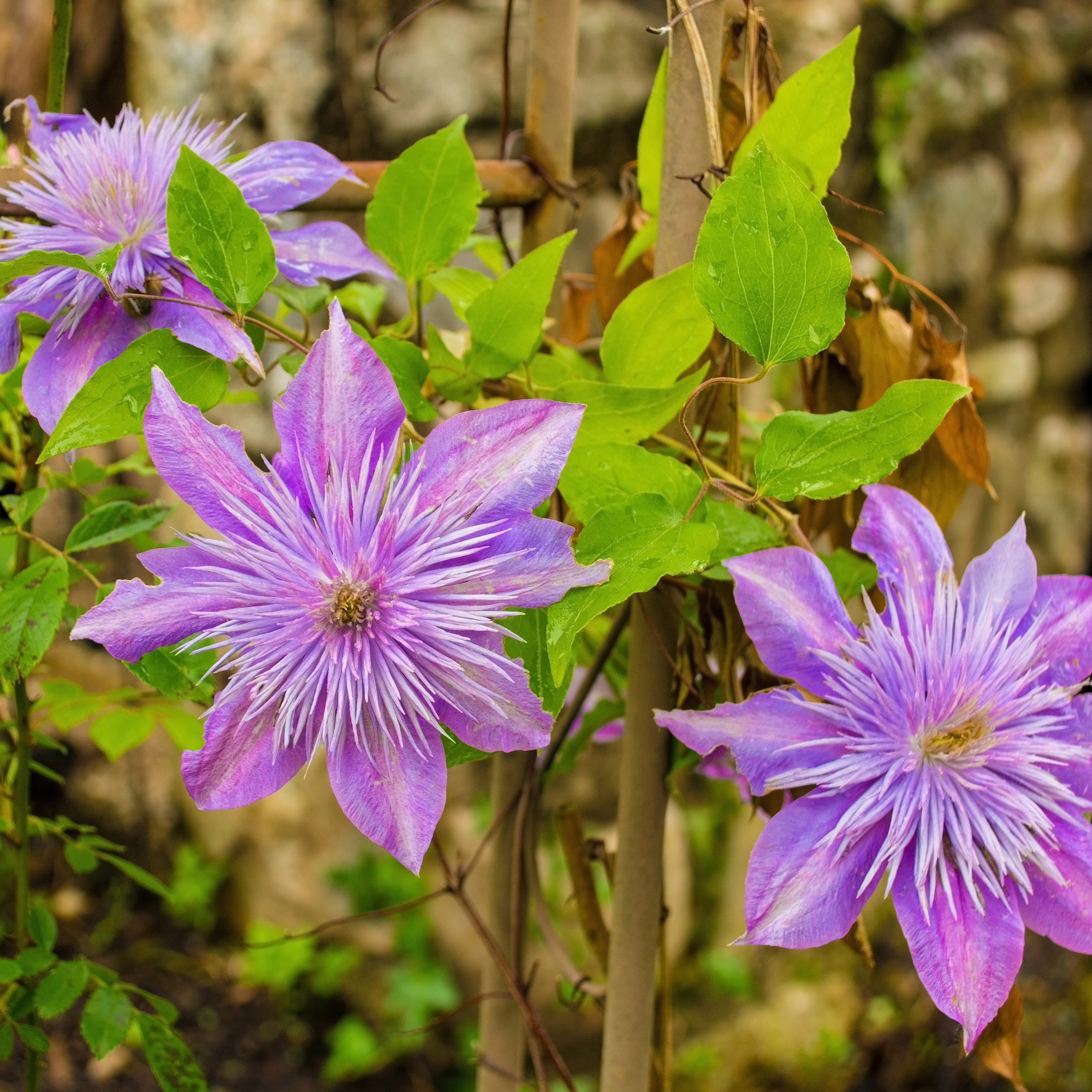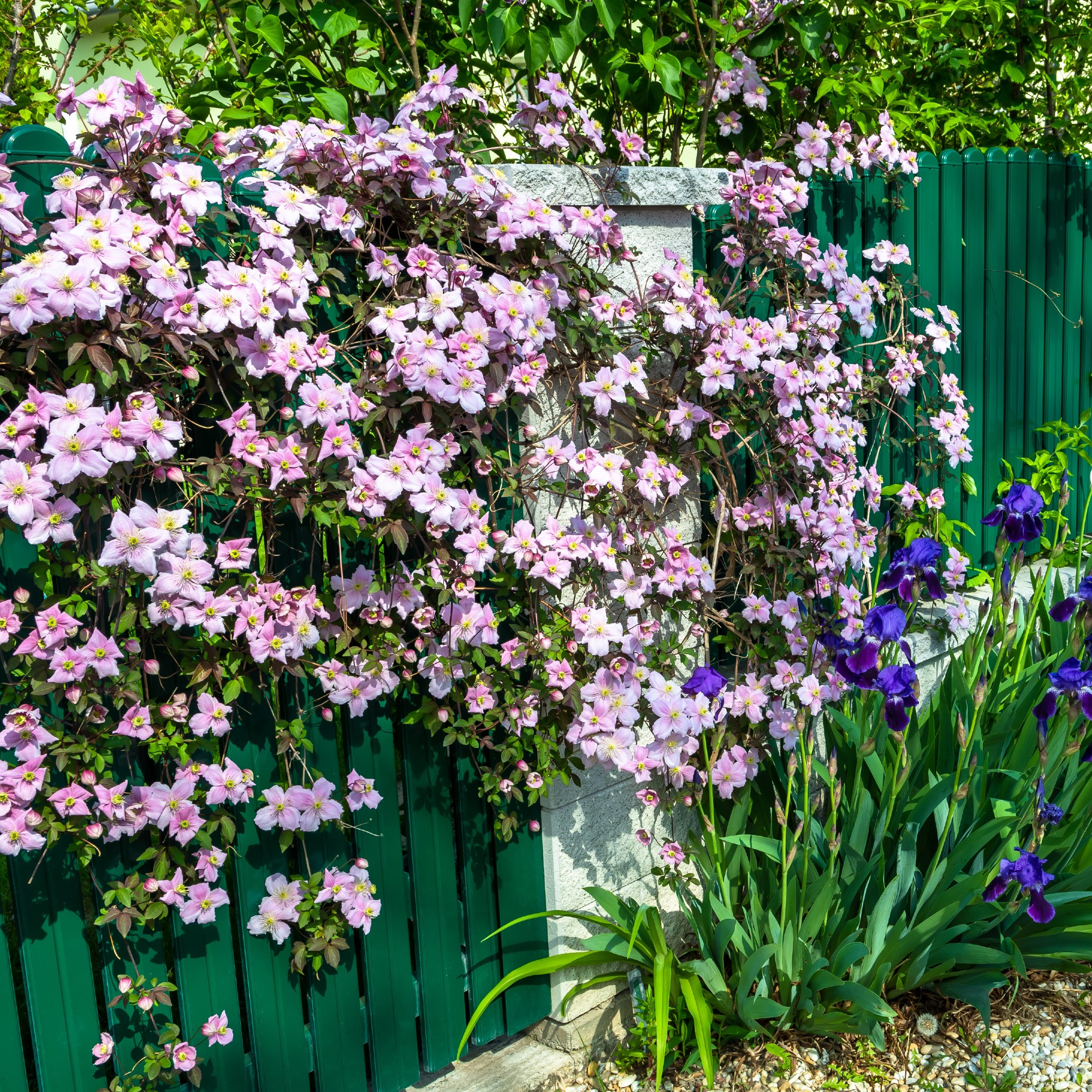
If you recently added a beautiful clematis climber to your garden, you should consider if you need to deadhead your clematis to keep it healthy and thriving.
Part of the Ranunculaceae family, the perennial (returning each year) clematis is a genus available in literally hundreds of species and colours. It's a fast-growing climbing plant too, when cared for and cultivated, clematis makes an easy climbing plant to elevate your planting scheme.
Whether you want privacy on a patio or a successful climbing plant for a pot a well-loved clematis will produce a galaxy of star-shaped blooms for years and years.
Should you deadhead a Clematis?
Clematis can look just as at home in a modern landscaping plan as in more traditional cottage garden ideas thanks to cascading flower heads bursting with colour.
But the celestial-style flowers eventually supernova and leave behind a gloomy and chaotic canopy. So, we've asked reliable garden experts whether you should deadhead a clematis to keep the climbing plant in good shape.

'Deadheading is not a crucial aspect of caring for clematis, but it is recommended due to the benefits it provides the plants,' explains Martin Donnelly, a horticultural expert from LBS Horticulture.
'For the majority of clematis varieties deadheading faded blooms is a great way of encouraging the plant to produce more flowers whilst keeping your garden looking tidy,' agrees Jamie Shipley - gardening expert and Managing Director of HEDGES DIRECT Ltd.
When should you deadhead a clematis?
Removing spent clematis flowers will keep the climber growing healthily and happily but knowing when to deadhead a clematis plant depends on its type.
The month to deadhead your clematis depends on the variety, which can be organised into 3 groups:
- Group 1 (produce flowers on last year’s wood) - Deadhead and prune these early flowerers in mid to late spring once the flowers have faded
- Group 2 - (produce flowers on new shoots off last year’s growth) - Deadhead and prune after flowering in early summer
- Group 3 - (late flowering) - Deadhead after flowering in autumn and then hard prune in February to the lowest buds to avoid tangled growth

'Deadheading can help the plant produce new blooms and growth later in the season, but it does also depend on the type of clematis that you have,' says Martin.
Does a clematis bloom twice in one year?
That's right, not only does clematis make an attractive asset to gardens once per year, but may offer an encore and flower again later in the season. This bloom pattern is known as 'twice-flowering' and can be encouraged by deadheading the clematis plant when the first round of clematis flowers die off. However, this does depend on the species of clematis.
'Deadheading the early-blooming varieties in group 2 will help to encourage a second wave of flowering in early autumn,' says Jamie.
'If your clematis has flowers on shoots from last year's growth, these can flower again for a second time when deadheaded. Even if you do not have this type of clematis, all varieties will benefit from deadheading, as it neatens up their appearance and can aid with new growth,' continues Martin.

Deadheading clematis offers many positives to the plant including the hopeful chance of a second bloom. If not, then a bountiful flowering display is sure to follow next year.
'Removing dead flowers stops your clematis from pouring its precious energy reserves into seed production and instead focuses on producing new growth - which will result in a longer and more vigorous bloom the following year. If left unpruned your clematis will be free to become tangled and straggly,' confirms Jamie.
'To deadhead your clematis, take a pair of sharp secateurs and make the pruning cut where the flower meets the stem. Making a clean cut with a sharp blade will help the plant heal faster and reduce the risk of disease,' advises Jamie.
What you need
Gardening gloves are a must when deadheading to protect your hands
FAQs
When does a clematis flower?
Novice gardeners may not realise that clematis plants flower at different times of the year depending on type and variety. So it is technically possible to enjoy the spectacular show of Clematis blooms all year round if desired.
Why won't my clematis flower?
According to the Royal Horticultural Society, the most common reason for a clematis with no flowers at all is wrong growing conditions.
The far-reaching climbers require lots of hydration but well-drained soil. Also, their roots like to be cool and shaded but growth and flower production will be hindered if sun exposure is restricted above ground
Here's hoping for a double flowering clematis in your garden this year!







